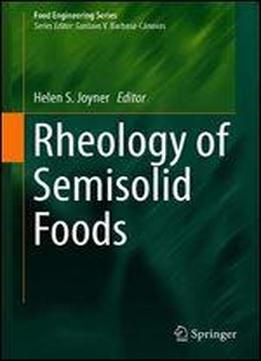
Rheology Of Semisolid Foods
by Helen Joyner /
2019 / English / PDF
14.8 MB Download
Rheology of Semisolid Foods comprehensively covers the rheological behaviors and rheological testing of semisolid foods. Individual chapters focus on semisolid food structure, rheological and sensory behaviors, testing of various semisolid food behaviors, and factors that impact those behaviors. Special concentration is given to the relationships among semisolid food structures and mechanical properties and textures. The second section of this work presents a series of case studies on acid milk gels and yogurt which provide a practical illustration of the concepts presented in the preceding chapters, allowing readers to gain both conceptual knowledge of semisolid food rheology and an understanding of how that knowledge can be applied to a food system of choice. Individual components, processing parameters, and storage conditions can dramatically impact food functional properties and textures. Changing any of these factors can cause significant microstructural alterations resulting in undesirable changes in product stability, functionality and texture. The lack of knowledge of how these factors impact the final food properties makes development of new food products a process of empirical trial rather than intentional design. A fundamental understanding food structure, function and texture relationships is critical for targeted design of food products. This text is a valuable reference for researchers looking to gain an understanding of how rheology works in semisolid food design and processing.











